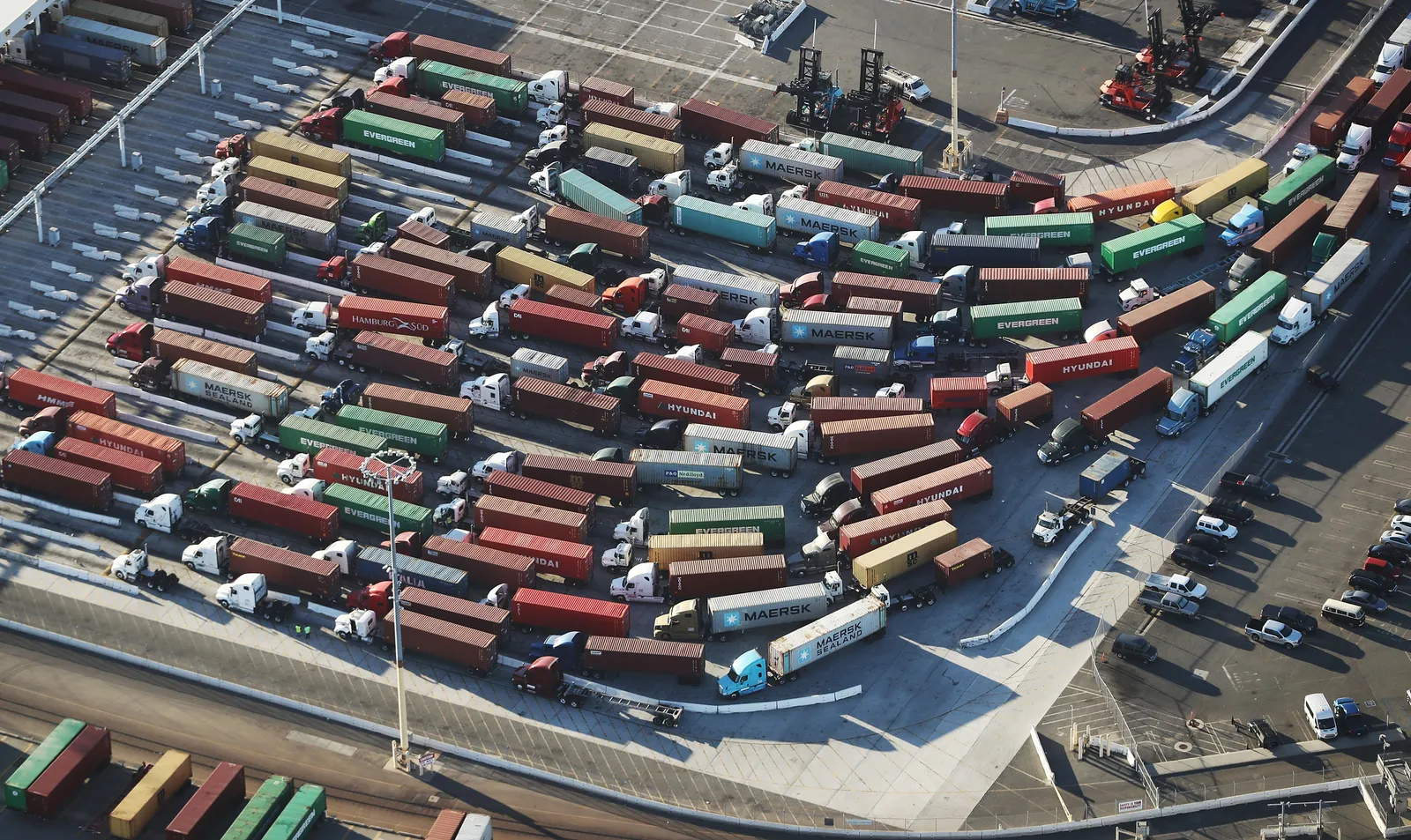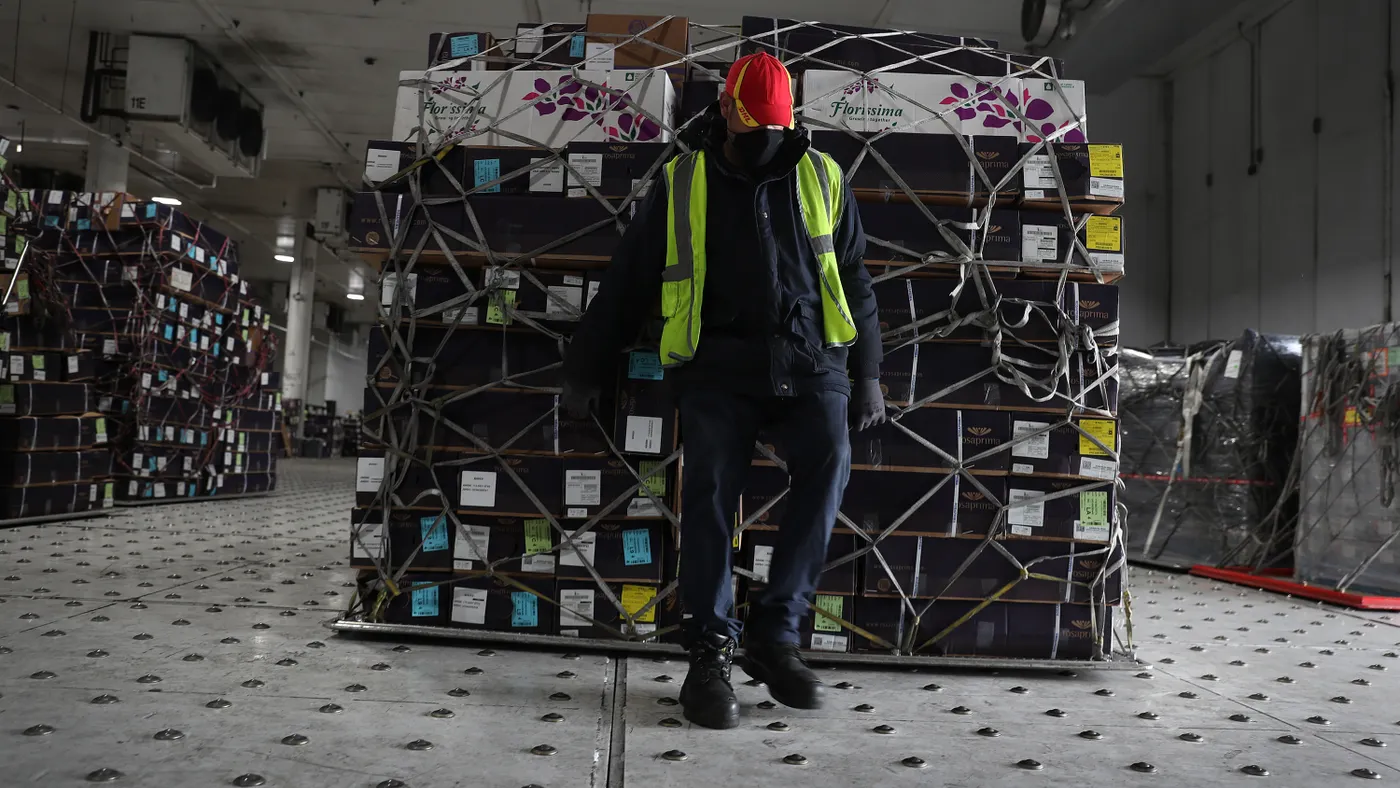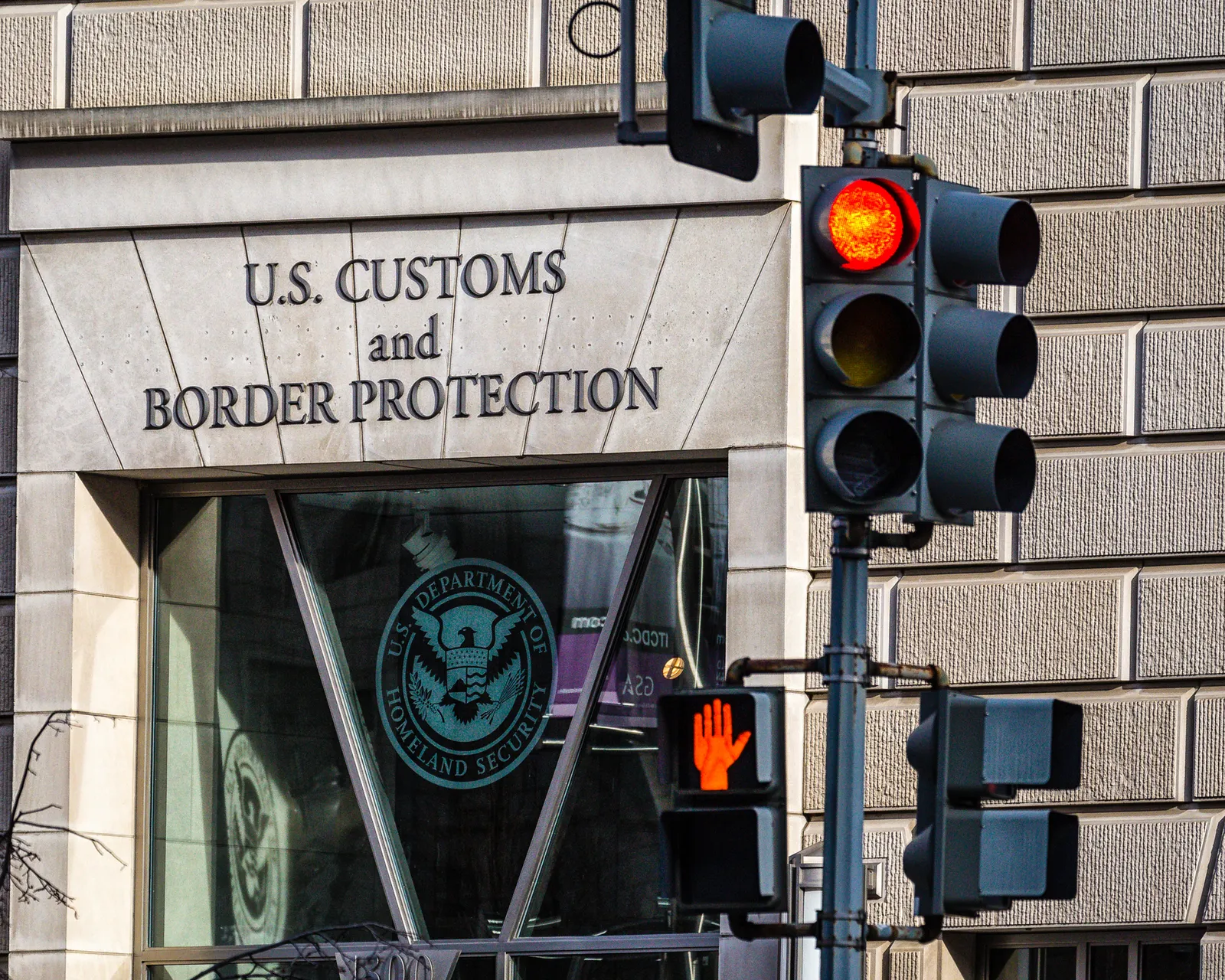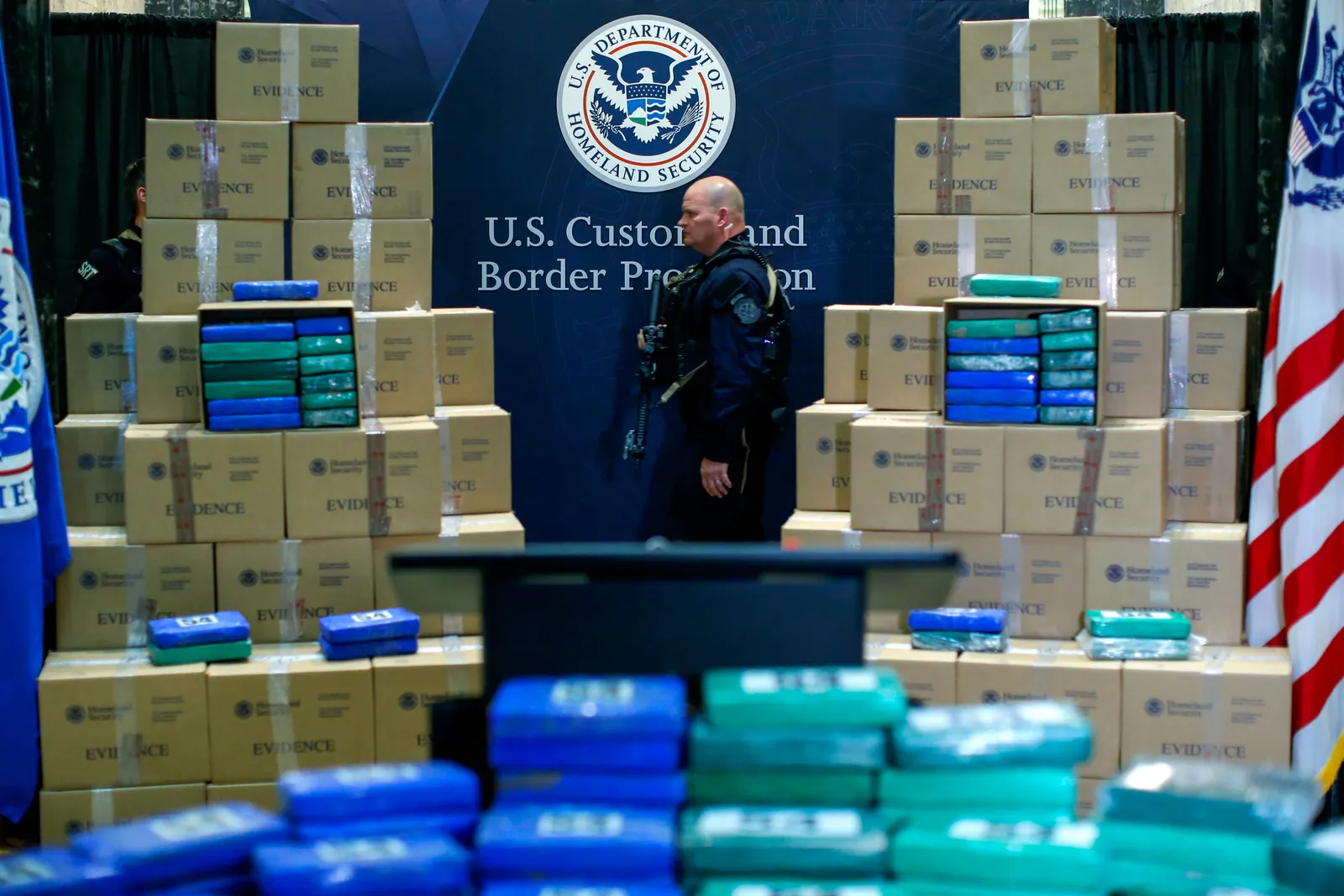
2025’s logistics risks include tariffs, labor strife
The new year will introduce a bevy of challenges for shippers' logistics strategies.
President-elect Donald Trump's push for higher tariffs, potential labor disruptions and pricing pressures are among the developments supply chain managers will have to navigate in 2025. No transport mode will be spared, with carriers in the ocean, air, rail, truck and parcel delivery spaces all grappling with their share of complexities.
Supply Chain Dive spoke with several experts about 2025’s logistics risks and how shippers can prepare. Here's what we found.
ILA-USMX contract ratification, tariffs cloud ocean shipping
The ratification process for the tentative six-year union contract for East and Gulf Coast port workers will be top of mind for ocean shippers.
The deal, announced Jan. 8 by the International Longshoremen's Association and the United States Maritime Alliance, averts the risk of a potential Jan. 15 port strike. But it still needs to be approved by rank-and-file workers and port employers to take effect, and contract rejections have happened before in the supply chain world.
If a strike threat emerges again, companies can prepare by actively monitoring goods going through affected ports, balancing existing inventory levels and exploring West Coast alternatives, Brian Pacula, supply chain partner at West Monroe, told Supply Chain Dive in an email. Shippers also would also have the option of shifting to air freight if they're willing to swallow the added cost, he added.
Beyond planning contingencies for port disruptions, shippers should consider how Trump's proposed tariffs would impact ocean shipping lanes if they're implemented, according to Pacula. Some companies are frontloading imports and stockpiling inventory ahead of Trump’s return to office to minimize any new tariff impacts to their bottom lines.
"At a minimum, supply chain teams should gather and organize relevant data sets, explore alternative options, and create a shortlist of strategies to assess the impact on costs, lead times and suppliers," Pacula said.
Mexico demand could spur rail hurdles
Labor disputes and tariffs could also influence rail shippers' 2025 strategies. Companies are likely to pull forward some rail volume to reduce their exposure to broader logistics risks, according to Jay Cushing, senior bond analyst at bond research firm Gimme Credit.
"For the railroads, customers, and investors we think intermittent labor disruptions and tariff uncertainties should be viewed as a 'cost' of doing business — less of a non-recurring item," Cushing said.
CPKC is particularly exposed to potential Trump tariffs in North America, as its network connects the U.S., Canada and Mexico, Cushing noted. But CPKC is also poised to benefit from growth in cross-border freight activity between the U.S. and Mexico amid ongoing efforts to nearshore supply chains, he added.
"Capacity has not kept up with the growing demand."

Paul Brashier
ITS Logistics VP of global supply chain, speaking on Mexico's outbound rail activity
Elevated U.S.-Mexico trade activity has strained available rail capacity and disrupted trade flows at times. The agriculture industry felt the pinch in 2024 as major U.S. railroads paused grain shipments into Mexico. Outbound rail activity has been in a similar boat.
"There has been a significant increase in outbound demand from Mexico over the last 18 months," said Paul Brashier, ITS Logistics' VP of global supply chain. "Capacity has not kept up with the growing demand."
Brashier added that Mexico will need to bolster its infrastructure to meet heightened activity. Rail transportation is a key piece of Mexico's infrastructure improvement plans under President Claudia Sheinbaum, according to ProTrans, a transportation and supply chain management provider.
"Mexico’s infrastructure, while improving, faces many needs and challenges that contribute to current gaps and are driving new requirements for investment," per ProTrans.

De minimis uncertainty looms over air cargo
Regulatory uncertainty around low-cost imports and tariff risks are two potential headwinds in the air cargo space for 2025, according to Madhav Kurup, COO of air freight, sea freight and contract logistics at Hellmann Worldwide Logistics.
The de minimis exemption, which allows companies to avoid duties and taxes on U.S. imports below $800, has encountered increased scrutiny in recent years. U.S. Customs and Border Protection announced a plan to implement strengthened data collection requirements around those imports. The provision has been a key tool in direct-to-consumer supply chains, with e-commerce shipments that leverage de minimis helping to fuel the air cargo industry's resurgence.
"Any changes to this could affect the flow of e-commerce shipments, which would have an impact on the air cargo sector," Kurup said in an email. "While the industry has shown resilience in the face of geopolitical and economic changes, navigating these challenges will require agility and strategic planning."
Meanwhile, new tariffs could cause air cargo demand to climb just before they take effect, Judah Levine, Freightos' head of research, said in a November email. If importers aren’t able to receive all their needed inventory via ocean shipping prior to new tariff implementation, they may briefly ramp up their air cargo usage to secure goods and avoid higher customs costs, he explained.
But overall, shippers have had plenty of notice to push forward inventory before the next Trump administration, providing a short-term boost to ocean activity rather than air cargo, Levine said.
"So with the anticipation that the new Trump administration will implement tariff hikes at some point in 2025, many shippers have already started increasing their ocean volumes, as there will probably be at least several months until any change actually goes into effect," he said.

Trucking rates may be less shipper-friendly
For truckload shippers, 2025 is unlikely to provide the same soft rates as the past two years, according to Chris Caplice, DAT Freight and Analytics' chief scientist.
Since the spring of 2022, average long-haul dry van contract rates have plummeted 23% while spot rates have dropped by 36%, Caplice said in an email. But signals in the latter half of 2024 indicate pricing power might finally swing back in carriers' favor soon.
Due to the potential climb in costs such a swing could create, supply chain professionals need to clearly communicate expectations regarding 2025 trucking rates to higher-ups, according to Calpice.
"If your C-suite thinks your bid events in 2025 will keep generating year-over-year savings, introduce them to truckload pricing analysis for the decade or so before the pandemic," Caplice said. "Benchmarking rates against the broader market is a much better performance measure than year-over-year comps."
With trucking rates currently low, shippers are trying to secure prices at longer durations than they have historically pursued, said Jeremy Nolt, VP of brokerage at Zipline Logistics.
"Customers are hedging their bets, saying, 'I don't know if it's going to get any better than this, and the rates might not be this low for a while, so let's try to lock in our brokerage partners to rates essentially where they're at now,’" Nolt said in an interview.
Strike risks in parcel delivery operations
Further downstream, several parcel carriers are exposed to potential labor disruptions in 2025.
Teamsters-organized Amazon warehouse workers and contracted delivery drivers went on strike in December during the thick of the peak holiday shipping season. Although the strike is over, a union spokesperson told Supply Chain Dive in December its push to unionize Amazon workers hasn't ended.
Meanwhile, FedEx and its pilots union still haven't reached a new contract agreement since employees rejected a tentative deal in 2023. The union pushed to be released from supervised negotiations in 2024 in a bid to expedite talks, but a federal mediator rejected the request. A release is a necessary step before pilots can strike.
Perhaps the top threat to parcel shipping reliability in 2025, at least in North America, is another Canada Post strike if union contract negotiations sour.
Employees shut down the government-owned carrier for more than a month in 2024, with operations finally restarting on Dec. 17 after the Canada Industrial Relations Board ordered them back to work. The board’s action has given Canada Post time to reach a deal with the Canada Union of Postal Workers before May 22, the revised contract expiration date.
Canada Post customers could be at risk for more delays if an agreement isn’t reached by then, pushing shippers to diversify further with alternative carriers. However, other delivery providers often count on Canada Post to make deliveries to far-flung addresses, Alison Layfield, director of product development at ePost Global, said in an interview during the December strike.
"There's so many remote areas that only Canada Post is going to deliver to," Layfield said. "You have carriers such as UPS and Purolator, they have contracts with Canada Post for those specific areas. And so they don't have anyone else to hand those shipments over to, either.
Larry Avila, Colin Campbell, Alejandra Carranza and Kelly Stroh contributed to this article.












